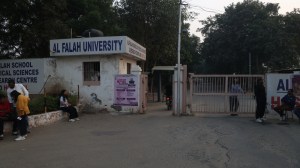Stay updated with the latest - Click here to follow us on Instagram
Changing City: Iconic double-decker bus makes a comeback in Mumbai with green fuel and next-gen technology
The BEST is hoping its electric-run double-decker buses will help reduce its carbon footprint and save nearly 26 million litres of diesel every year.
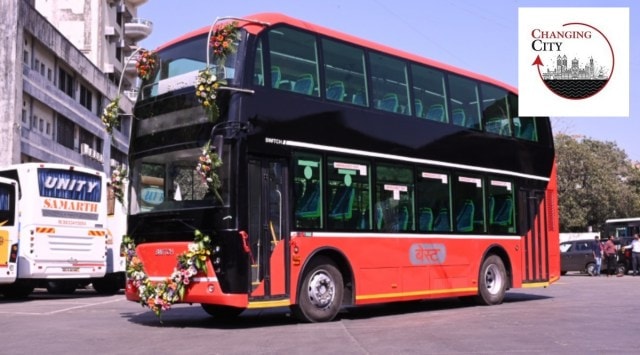 The Brihanmumbai Electric Supply and Transport undertaking (BEST) introduced this new red fleet having large size glass windows, gives a panoramic view of the city's where some of most popular heritage structures. (Express Photo)
The Brihanmumbai Electric Supply and Transport undertaking (BEST) introduced this new red fleet having large size glass windows, gives a panoramic view of the city's where some of most popular heritage structures. (Express Photo) Mumbai’s iconic double-decker bus hit the streets in its revamped electric, air-conditioned version on February 21. The Brihanmumbai Electric Supply and Transport (BEST) undertaking introduced the first of its brand new red fleet which has large windows that give a panoramic view of the city’s heritage structures. All upcoming electric-run double-decker buses have been taken on a wet lease and the public transport undertaking is aiming to reduce its carbon footprint and save nearly 26 million litres of diesel every year. The existing double-decker buses are diesel fuelled.
How many buses?: Currently, the BEST has received only one e-double-decker bus from Switch Mobility. It will receive 900 such buses, which will be added to its fleet in a phased manner. Of these, 50 AC e-double-decker buses are likely to be received by March this year and many of them will be open-deck.
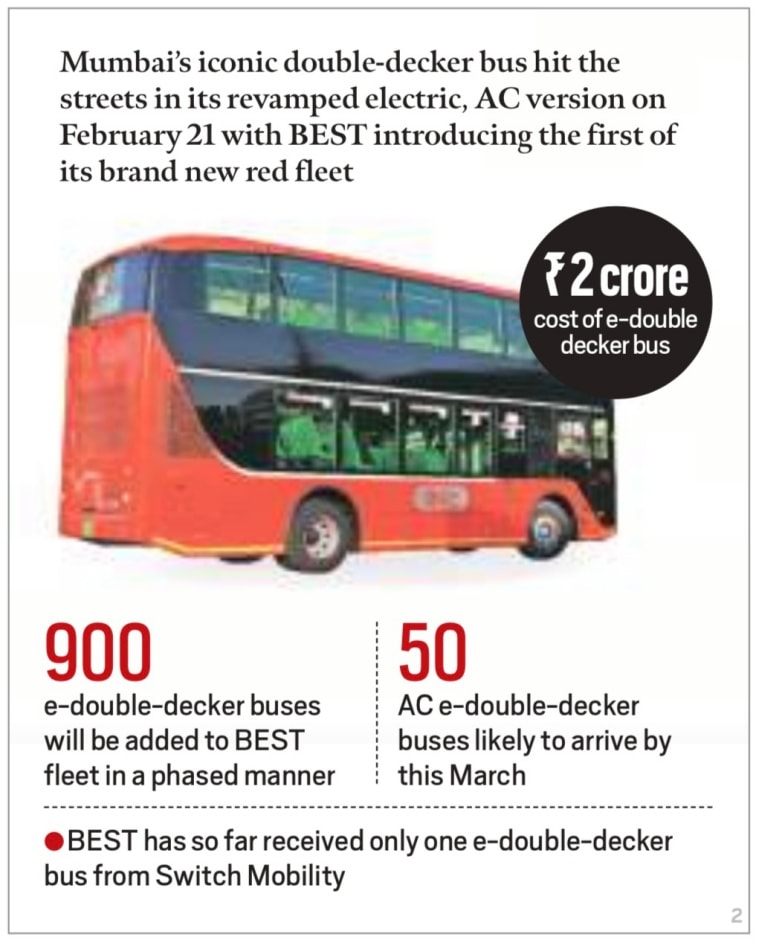
Cost: Rs 2 crore for one e-double-decker bus.
Details: The first e-double-decker bus has a 231-kilowatt-hour battery life with a range of up to 250 km. The bus can cover 100 km with just a 45-minute charge, while a full charge takes 80 minutes.
The existing fleet: At present, there are 45 double-decker buses in the BEST’s fleet of over 3,000 buses. These 45 buses are diesel-fuelled and the operational life of most of them is about to end by this year.
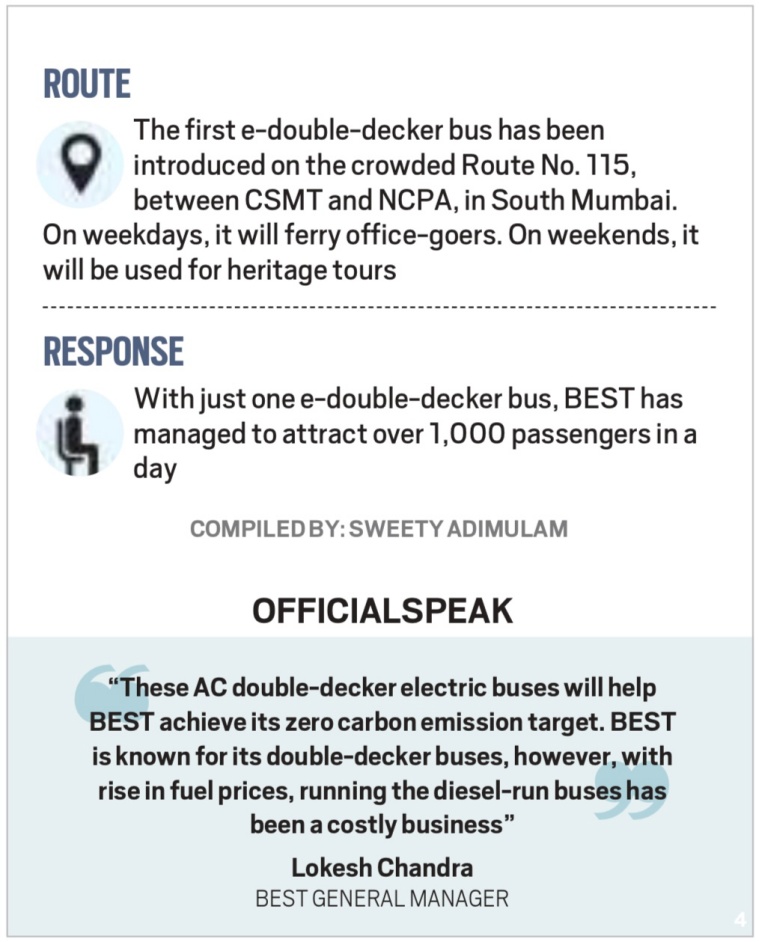
Benefit: The e-double-decker bus has a carrying capacity of up to 90 passengers per bus. It can replace up to nearly 20 private cars on roads and carry the same number of passengers in less road space, with zero carbon emission. It is fitted with a digital ticketing system (tap in and tap out), CCTV cameras, mobile charging points, a GPS tracking system allowing commuters to check through an app when the bus will arrive at their stop, digital destination boards, and a public addressing system.
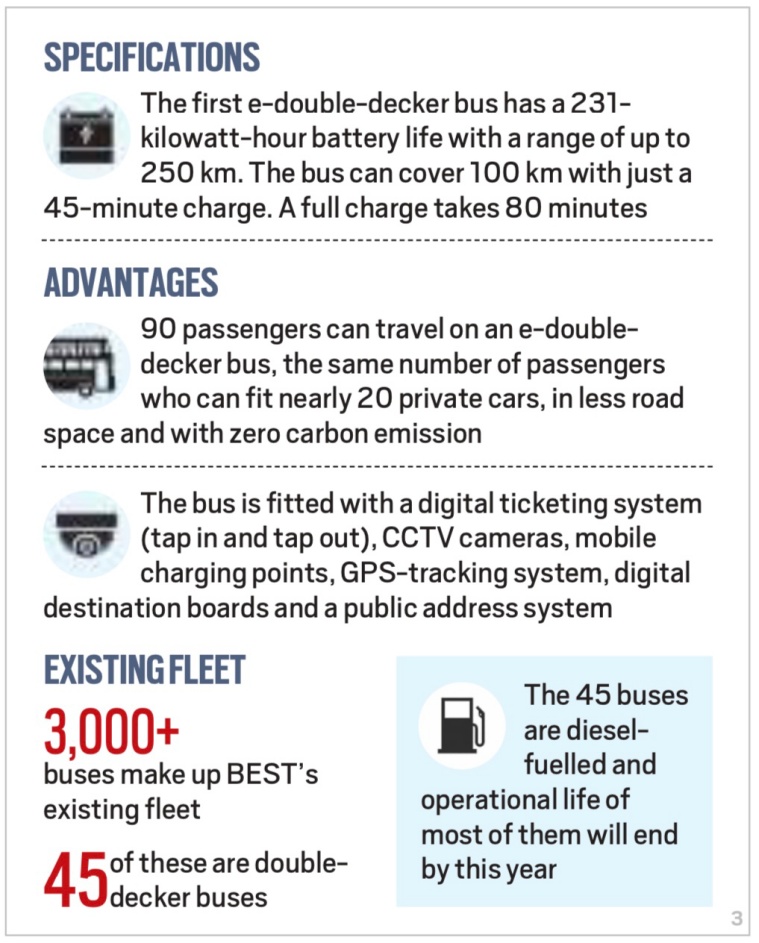
Route: The first e-double-decker bus was introduced on the crowded Route No. 115, between CSMT and NCPA, in South Mumbai. The bus will only make trips during weekdays to cater to office-goers. On weekends, it will be used for heritage tours.
Response: With just one e-double-decker bus, the BEST has managed to attract over 1,000 passengers in a day.
Authorities speak: “These AC double-decker electric buses will help BEST achieve its zero carbon emission target. BEST is known for its double-decker buses, however, with an increase in fuel price, running the diesel-run buses has been a costly business.,” says BEST General Manager Lokesh Chandra. Now, with more electric buses added to its fleet, the transport undertaking believes it can reduce its carbon footprint and provide better service to passengers, with increased frequency in trips, without worrying about fuel costs.


